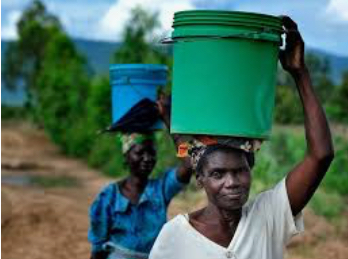Extreme climatic events have become prevalent in Zimbabwe’s predominantly semi-arid environment. It was Cyclone Dineo in 2017 which directly affected over 130 000 people across the country.
Two years later, another tropical storm Idai directly affected more than 270 000 people. As if a two-year recurrence interval has become a systematic pattern, by 2 January 2021, tropical storm Chalane had caused minor damages in Manicaland province and over 600 people had been evacuated.
Cyclone Dineo in 2017 ravaged the country just a year after the 2015/16 El Nino phenomenon which caused severe drought and affected particularly the already vulnerable and food insecure subsistence farmers in the country.
The drought which was declared a State of Disaster left over 4.1 million people in need of food support. These extreme climatic conditions have also been affecting wildlife as deaths of elephant calves due to high temperatures and dry conditions have been reported.
Reports however indicate that the impacts of climate change disproportionately affect women the most. In its Communication Strategy for the National Adaptation Planning Process document, the Ministry of Environment, Climate, Tourism and Hospitality Industry revealed that climate change is likely to worsen women’s vulnerability to it whilst widening gender dynamics.
“Seventy percent (70%) of the population of Zimbabwe are smallholder farmers, whose primary livelihood is agriculture, and women represent the largest group of people involved in farming activities (~86%).”
“Disparity between men and women is already acute: women occupy a disadvantaged position in society and are more reliant on natural resources for food and income than men. Climate change will exacerbate women’s vulnerability to it whilst widening gender dynamics.”
Globally, it is also evident that women predominate in the world’s food production, yet agriculture is the most affected sector. Their reliance on natural resources also worsens their susceptibility to the impacts of climate change.
In most rural areas of Zimbabwe, women are responsible for household water supply. In most areas, clean water supplies are very far from homesteads.
In some parts of the lowveld for instance, beneficiaries of the Fast Track Land Reform still do not have access to water supply close by. They travel long distances carrying buckets of water for domestic use.
They also rely on wells and rivers, and if these dry up in the post rainy season, the water crisis worsens. Moreover, frequent droughts in recent years have resulted in the perennial drying up of water sources, leaving women with a challenge to face.
Women also shoulder the responsibility of preparing meals for the family. In most rural areas, they have nutritional gardens where they plant vegetables for family consumption.
This is usually done along rivers or close to dams for a reliable source of water. However, some of the rivers which used to provide water throughout the year have been drying up just after winter in recent years, depriving women of water supplies for their nutritional gardens.
Thriving nutritional gardens along Mkwasine river from as far as Bikita to Chiredzi north, which were also sources of income for women who sold a range of vegetables to local business centres have become a thing of the past. This is because the river has not been providing enough water due to frequent droughts.
In the event of disasters such as floods, women in evacuation camps are more likely to suffer from sexual exploitation and various forms of abuse. The 2007/2008 drought induced food shortages worsened by economic instability resulted in many young girls dropping out of school and trapped into polygamous marriages.
There is a need for the government of Zimbabwe to address gender issues in climate change adaptation and mitigation programmes. The domestication of the United Nations Framework Convention on Climate Change – Gender Action Plan is a commendable initiative in addressing gender inequality in climate change mitigation and adaptation.





Heya i am for the first time here. I found this board and
I find It really useful & it helped me out much. I hope to give something back
and help others like you aided me.